DJI Mini SE vs Mini 2: how different are these ultra-light budget drones?
The DJI Mini has taken two flight paths… DJI Mini SE vs Mini 2. Which budget drone is the right one for you?
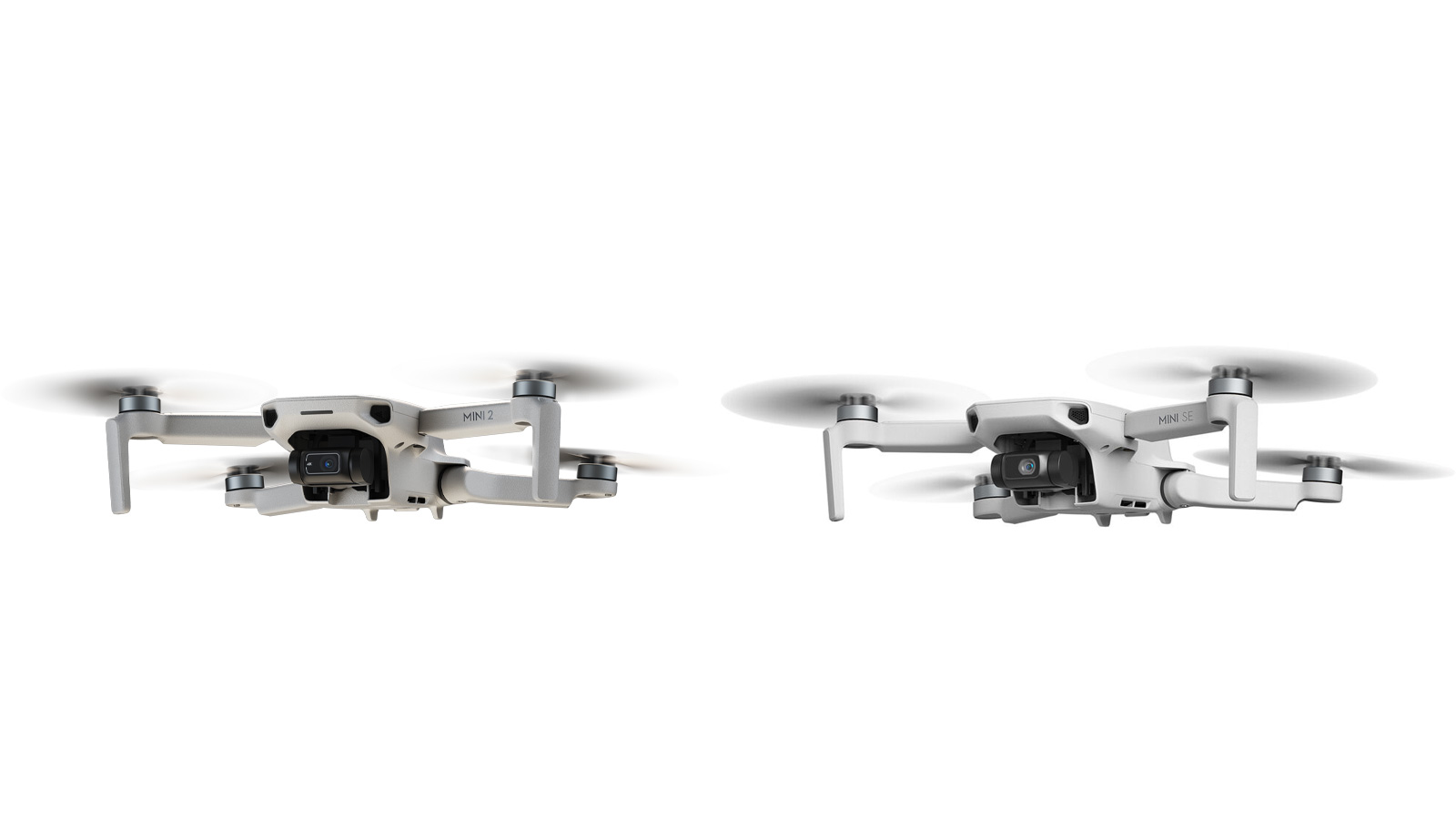
DJI Mini 2 vs DJI Mini SE: Which Ultra-Light Drone Rules?
Until recently, you’d choose a Mini if you wanted to stay below the critical 250g weight limit, and things were as simple as that. Now there is a DJI Mini 2 and a DJI Mini SE which both meet the criteria when it comes to weight, so how does a potential customer decide?
When the original DJI Mavic Mini launched in 2019, it achieved a good deal of success by including a 3-axis gimbal to stabilize a 12-megapixel camera. These features hadn’t been made available with anything like the battery duration or low weight and customers flocked to it, including plenty who already had drones but were looking for something more discrete (or less expensive to crash).
Inevitably DJI answered the clamor for a 4K camera, improvements to the radio transmission system and some other revisions with a new model in time for the subsequent holiday season, 2020, and so the Mini 2 was born. That created another tension though; the price of the Mini 2 rose by $50 / £50 to the point where the Mini 2 was a tougher sell in some markets.
The solution was to keep a low-feature version of the Mini series on sale too, at least in some markets (notably not in the UK or Europe). The DJI Mini SE is essentially the internal components of the original Mavic Mini inside a Mini 2 case, and it is the Mini 2 which will remain the ‘flagship entry-level’ aircraft.
DJI Mini SE vs Mini 2: Build and design
Why you can trust Digital Camera World
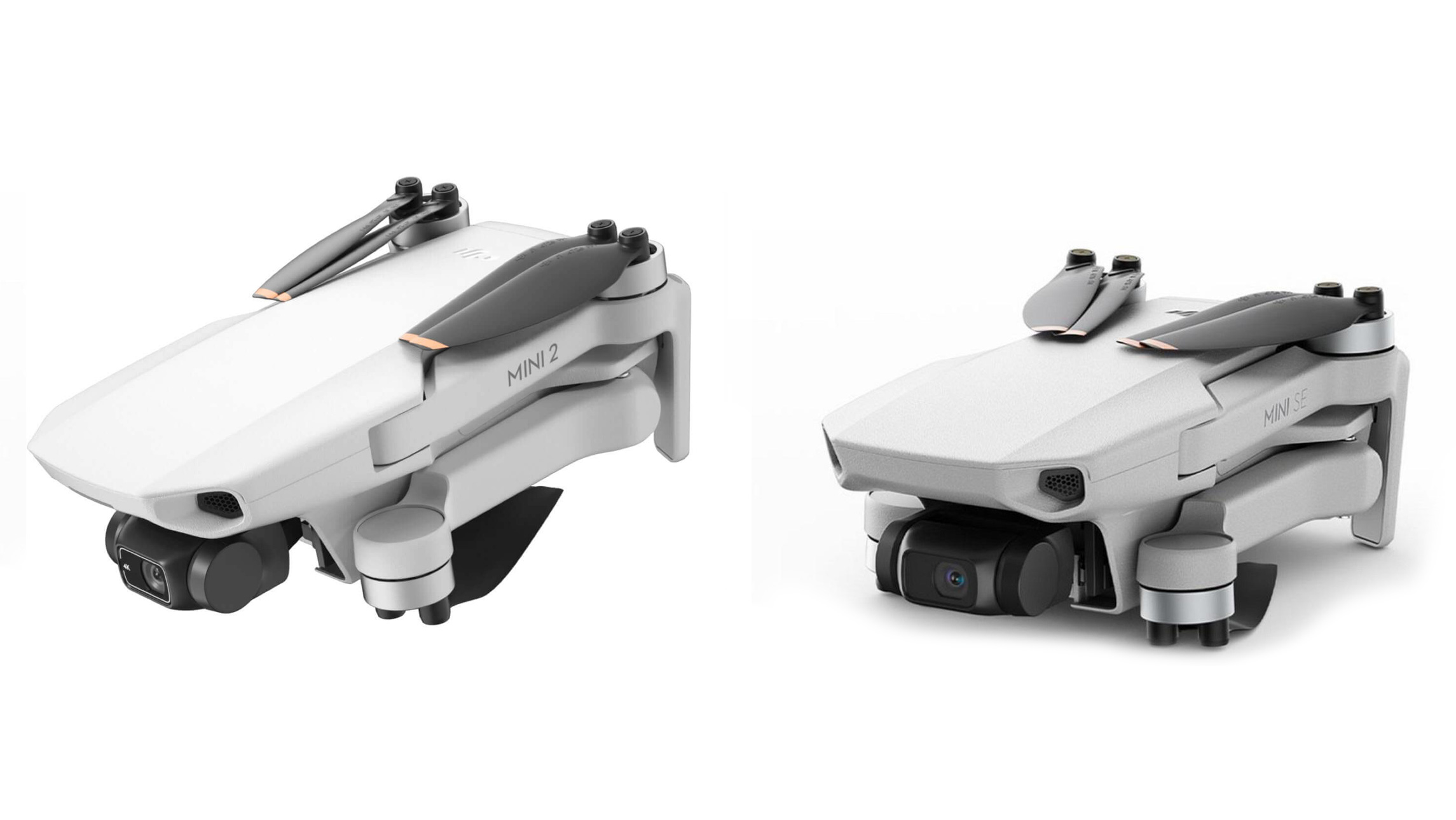
| Header Cell - Column 0 | DJI Mini 2 | DJI Mini SE |
|---|---|---|
| Take-Off Weight | 249g | 249g |
| Size | 159 x 203 x 56mm | 159 x 203 x 56mm |
| Folded size | 138 x 81 x 58mm | 138 x 81 x 58mm |
| Diagonal span | 213mm | 213mm |
| Sensors | Downward | Downward |
This isn’t an area you’ll see a lot of differentiation between these drones for obvious reasons, but examining things closely yields a few differences. For one thing the 4K camera on the Mini 2 has a nice shiny trim and just above it is a light which can change hue to indicate different situations.
There are also some similarities that are worthy of comment; the Mini SE and Mini 2 both feature real vents at the front, unlike the old Mavic Mini which had stickers over fake recesses. In the case of both drones, you’ll quickly adapt to the folding process (if you’re anything like us, you’ll close the wrong legs first once or twice), after which looking after either Mini is straightforward.
As ever with DJI drones, there is a strong argument in favor of the ‘Fly More’ kit, offering extra batteries and a case. Realistically though this is pretty tough for a drone, you won’t want it bouncing lose in a bag so if you’re not opting for DJI’s form-fitted cases then make sure you find something to protect it.
The underside of the drones make clear the presence of distance-sensing equipment which makes it easy to land the drone without coming in too hard. Neither Mini has the facility to avoid obstacles from other angles, though.
DJI Mini SE vs Mini 2: Speed & maneuverability
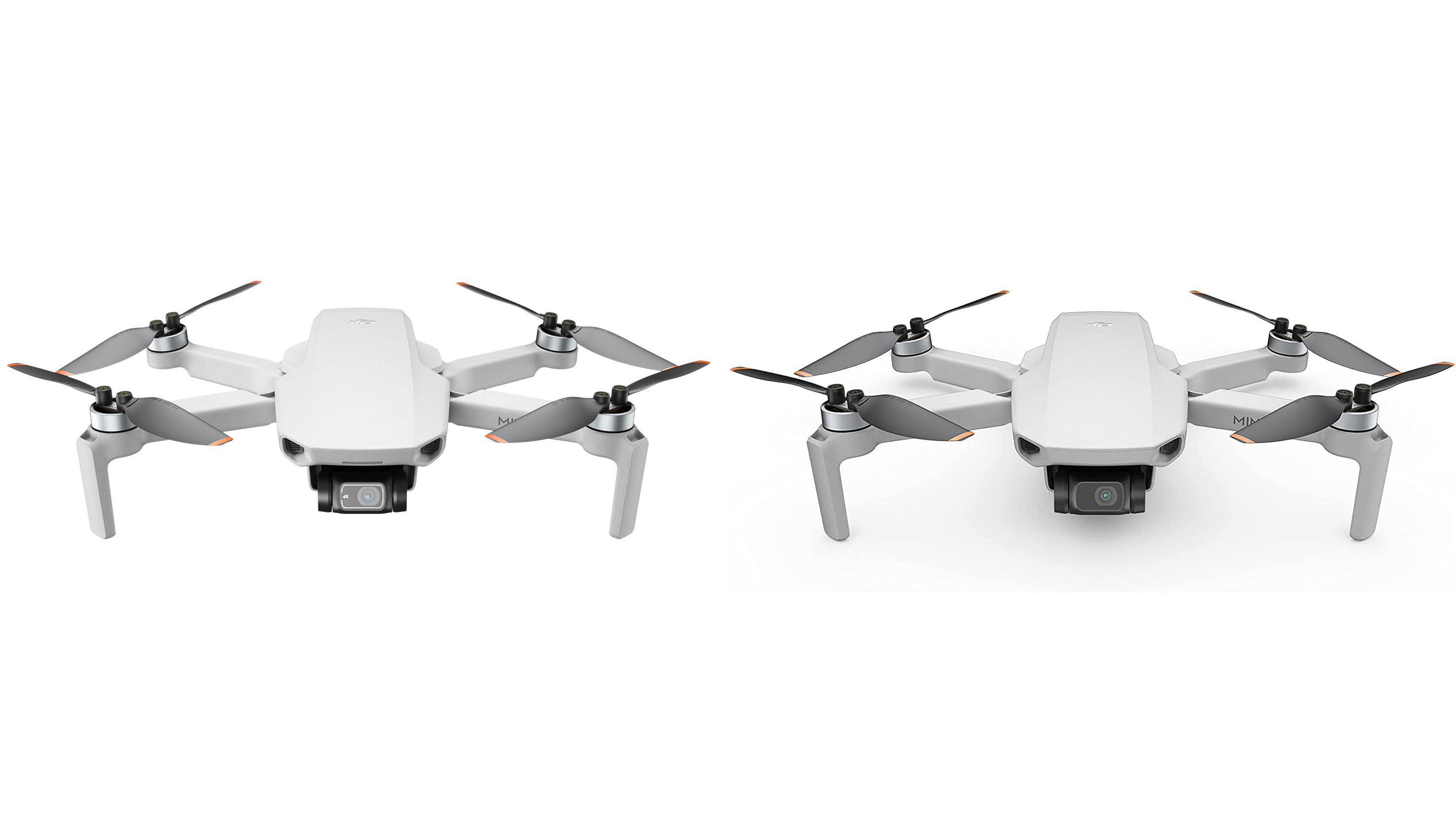
| Header Cell - Column 0 | DJI Mini 2 | DJI Mini SE |
|---|---|---|
| Horizontal Speed | 16 m/s | 13 m/s |
| Ascent Speed | 5 m/s | 4 m/s |
| Descent Speed | 3.5 m/s | 3 m/s |
| Maximum wind resistance | 10.5 m/s | 10.5 m/s |
The Mini SE sports the same quieter, more powerful motors as the Mini 2 rather than the older Mini with which it shares many components. While the cheaper drone doesn’t quite manage to get as much maneuverability out of the motors, they’re both capable of resisting wind up to Force 5 (10.5 m/s), which is one step up the scale from the old Mini.
If you simply have to have the best in the category, the Mini 2 has this section won, but for many simply being able to survive a high wind unscathed is a more serious issue and – on that front – the 2 and SE don’t seem too far apart. The extra thrust is there in the SE’s motors to help keep it in place, even if it isn’t used to skim along at quite the same speed.
The extra speed of the Mini 2 can get you some better shots in some circumstances (and you have the option of switching to a slower speed for something more cinematic). Climbing faster or traveling faster all make for faster looking video, though of course the still images are a matter of positioning first then shooting.
The Normal and Cine modes offer quick access to slower maximum speeds – Cine also reduces the sharpness of turns to soften them – in contrast to ‘Sport’, the maximum speed. Simply enabling Sport doesn’t mean everywhere is flown at maximum speed; both drones also have analog remote control sticks so piloting can be gentle until power is called for. When power is drawn upon, the Mini 2 is slightly less likely to disappoint but neither aircraft is a slouch.
DJI Mini SE vs Mini 2: Battery life
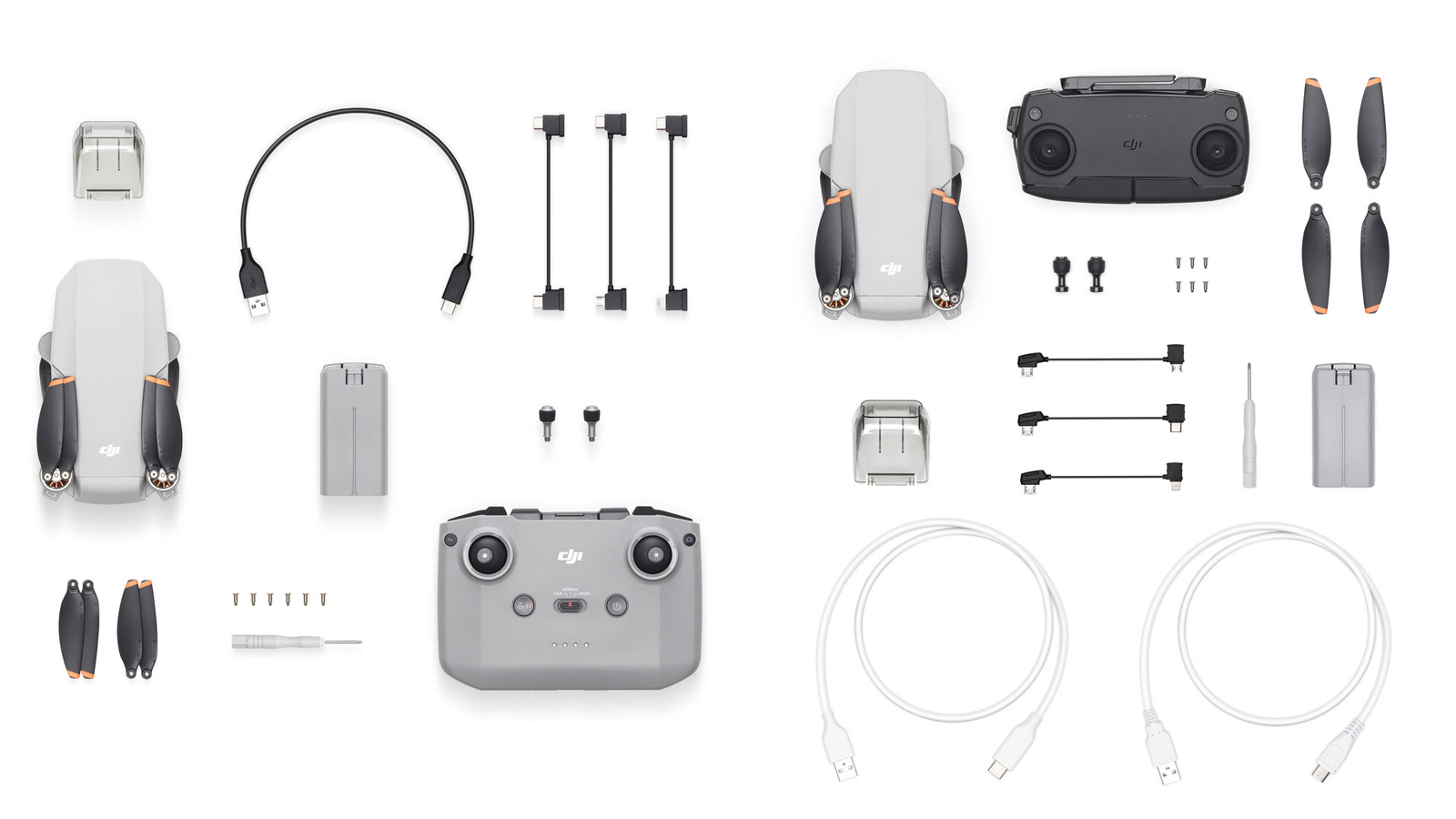
DJI Mini 2: 31 mins flight time
DJI Mini SE: 30 mins flight time
The drones both feature tail-gate opening doors for their batteries, but the Mini SE uses LiPo (lithium polymer) cells, just like the Mini 2. This offers more power as required than the old Li-ion battery from the Mavic Mini, so those batteries are not cross-compatible. The batteries on all the Mini models also lack the handy one-press charge meter we had become used to on DJI’s “Intelligent Flight Batteries,” and instead charging is achieved by connecting a USB-C socket to an available charger. Since speed is of the essence, and weight matters in drone design, it’s not a surprise we’ve not seen wireless charging here.
Those who spend that bit more, on the Fly More kit, will get themselves an external Charging Hub which will make it possible to charge up three batteries in sequence and to use them as a power brick.
DJI Mini SE vs Mini 2: Gimbal

| Header Cell - Column 0 | DJI Mini 2 | DJI Mini SE |
|---|---|---|
| Axis | 3 (pitch, roll, yaw) | 3 (pitch, roll, yaw) |
| Tilt | -110˚ to 35˚ | -90 to 20˚ |
| Pan | -20 to 20˚ | -20 to 20˚ |
| Tilt speed | 100˚/s | 120˚/s |
The gimbal is what really makes the difference on a drone, at least for photographers, softening the movements of the camera so that any video captured appears perfectly smooth. It must compensate for the sharp turns of flight and the vibrations of the motors at the same time and without one, or with simple electronic stabilization, the effects are never as close.
Both the Mini 2 and Mini SE have broadly similar devices mounted toward their front, which work on all three axis – something which has long been a trait of DJI’s camera drones. If comparing the video from the two, it’s essentially impossible to identify the difference in terms of stability (resolution etc. will come below), so we’d have to call this a dead heat.
DJI Mini SE vs Mini 2: Controller & range
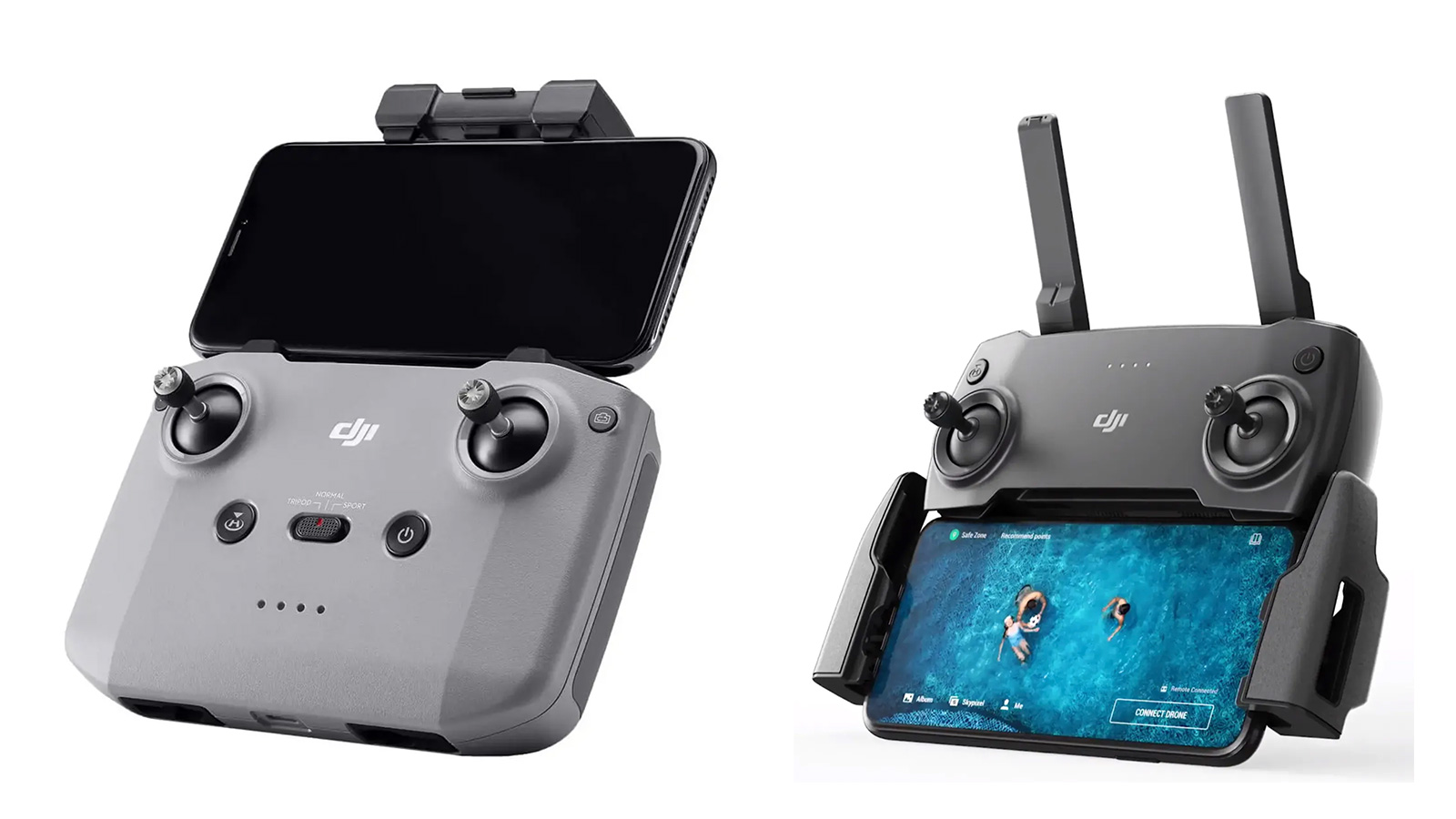
| Header Cell - Column 0 | DJI Mini 2 | DJI Mavic Mini |
|---|---|---|
| FCC (USA) Range Limit | 10km / 6.2 miles | 4000m / 2.5 miles |
| CE (UK/EU) Range Limit | 6km / 3.7 miles | 2000m / 1.25 miles |
| Battery | 5200 mAh | 2600 mAh |
| Phone Grip space / thick | 92mm wide | 160 mm long x 8.5mm thick |
| Live View Quality | 8 Mbps / 720p | 4 Mbps / 720p |
In this section the Mini 2 stretches its lead. The Mini SE’s extended wi-fi system simply doesn’t deliver the long reliable transmission range that the Occusync 2.0 system built into the Mini 2 does. It’s worth adding that out in the field you’d be lucky if the SE got past 1000m, but in reality that’s still more than it’s wise to fly, so there are plenty of circumstances for which the SE is just fine. The Mini 2’s extended range is also helpful if you drift behind trees or buildings since the signal is less likely to be immediately blocked.
The Mini 2 also features DJI’s new meatier controller design which can act as an umbilical for the phone’s battery (iPhone users might need to enable this in the settings). Flying drones and using your phones screen as a monitor, probably turned up to maximum brightness too, will use your charge up. If you’re undertaking a serious amount of flying in a day with the SE, you’ll likely need a power bank, but with the Mini 2 you can be confident the controller will keep things topped up.
The Mini SE’s controller is still a good device to fly with, though our preference is for the Mini 2 controller’s more modern design because it puts the screen nearer where you need to see it (above rather than below the hands). There is also a hint of better-quality material in the Mini 2’s controller, which might perhaps be an effect of the low weight.
DJI Mini SE vs Mini 2: Still photos
| Header Cell - Column 0 | DJI Mini 2 | DJI Mini SE |
|---|---|---|
| Resolution | 4000 x 3000 pixels | 4000 x 3000 pixels |
| Sensor size | 1/2.3in CMOS | 1/2.3in CMOS |
| ISO range | 100-3200 | 100-3200 |
| Effective focal length (EFL) | 24mm (83˚ FOV) | 24mm (83˚ FOV) |
| Formats | JPEG or DNG (Raw) | JPEG |
| Modes | Single Shot, Interval, AEB, Panorama (Sphere, 180˚ and Wide) | Single Shot, Interval |
There is a limited amount to separate the two drones when it comes to cameras – they both feature a 12-megapixel sensor at ƒ/2.8 which maxes out at ISO 3200. The significant difference when shooting stills is the Mini 2’s ability to shoot Raw (.dng) files which offer photographers a good deal more room for manoeuvre back at the desk.
Photographers who prefer to engage in a bit of experimentation will also appreciate the presence of Exposure Bracketing on the Mini 2, and it’s hard not to enjoy the auto-stitched panoramas created from the sky.
Both drones will help liven up a social media feed but if you take your photography seriously then you should already appreciate the advantages to be had from Raw files. DJI have not only done that, but put a cash value on that upgrade for you, and it’s up to you to decide whether you agree!
DJI Mini SE vs Mini 2: Video
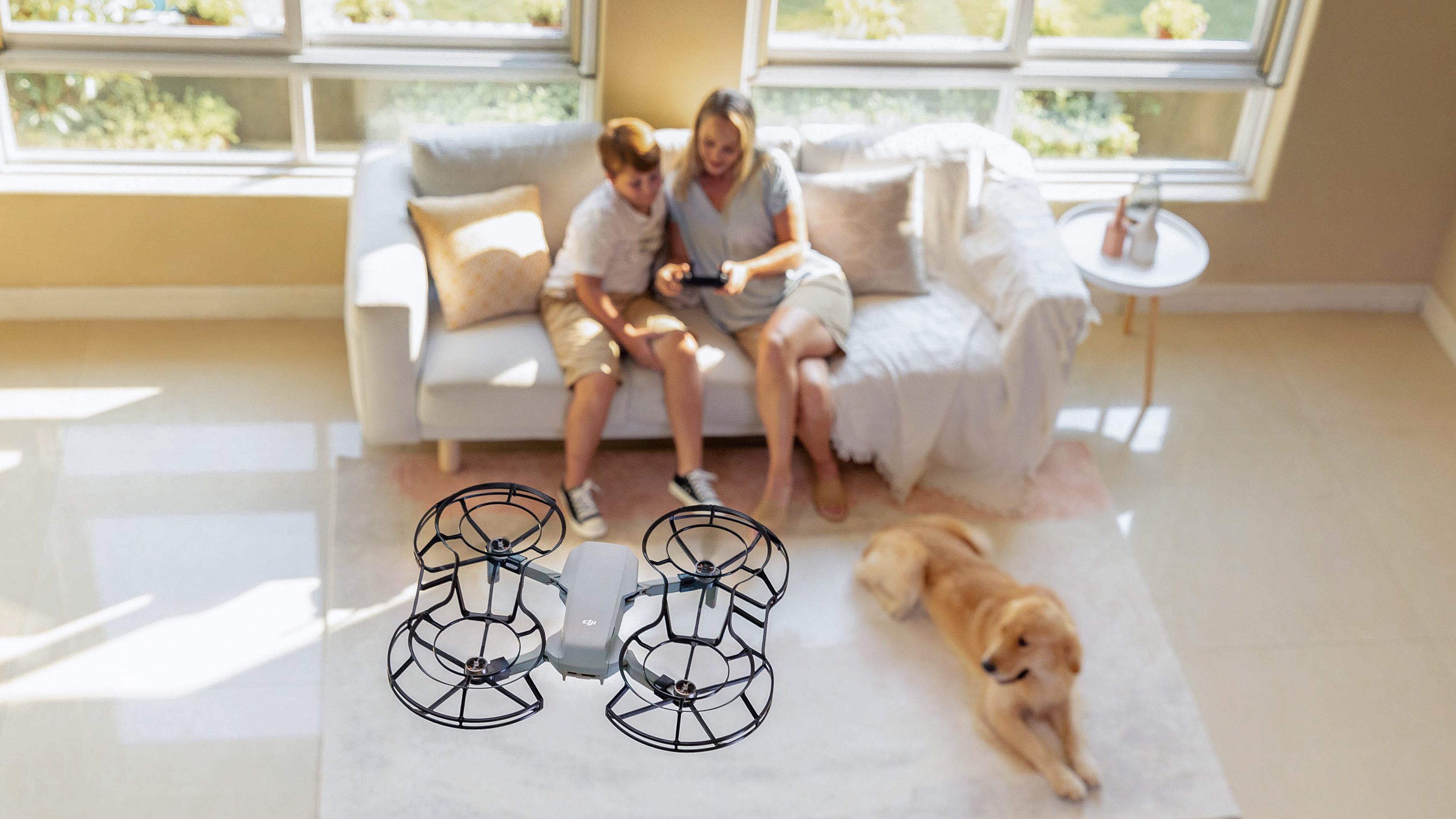
| Header Cell - Column 0 | DJI Mini 2 | DJI Mini SE |
|---|---|---|
| Resolution | 4K @ 30 fps / 2.7K @ 30fps / 1080P @ 60fps | 2.7L @ 30fps / 1080P @ 60fps |
| Bitrate | 100 Mbps | 40 Mbps |
| Max zoom | 4x digital | None |
Under the video heading, the Mini 2 has a very distinct advantage if 4K is of use to you. It is worth stopping to think whether it is; if you’re producing for YouTube you’d be surprised how few viewers switch up to 4K, for example, and plenty of screens are small enough that it’s hard to justify the server load.
Still the Mini 2 offers 4K and it does looks significantly better than the Mini SE to the detail-orientated examination. The higher bit-rate is a contributing factor there, though it’s fair to say that the throughput on the Mini SE isn’t as far behind as the numbers suggest.
The availability of 60fps at 1080P is appreciated but included with both drones, so doesn’t make it as a distinguishing feature.
The option of digital zoom, provided on the Mini 2, shouldn’t really be a deciding factor. It’s odd that it wasn’t an option on the earlier Mini, since it is only a digital zoom which will be of limited use to optical purists, but it feels better to have than not to. If you’re planning on undertaking roof surveys, for example, the Mini 2’s option of digital zoom might well be a worthwhile distinction as you can get in tight on any suspicious areas.
DJI Mini SE vs Mini 2: Software Features
DJI Mini 2: QuickShots: Rocket, Dronie, Circle, Helix, Boomerang
DJI Mini SE: QuickShots: Rocket, Dronie, Circle, Helix
DJI’s subject-tracking software is another reason to seek their hardware out, and one of the areas in which the firm seem to have made one slightly arbitrary choices between the Mini 2 and Mini SE. Both drones feature a selection of QuickShots – pre-programmed flights which keep your subject on camera as the drone swoops dramatically – but the Mini 2 has gained an extra one, Boomerang, without sharing it with the SE.
The DJI Mini 2 also includes a QuickTransfer feature, to pair with a nearby drone using WiFi for faster downloading of the full resolution files to the phone. This means you can get content out there without needing to get back to a computer and plug the MicroSD card in, so it’s a useful feature. This uses the 5.8 GHz band for a transmission speed of around 24 MB/s which is a notable improvement on the alternatives. If you do a lot of uploading on the fly, this is a big score for the Mini 2.
DJI Mini SE vs Mini 2: Verdict

If you can run to it, we’d suggest that the Mini 2 is the better choice, featuring as it does a good bit more flexibility when it comes to stills and video, not to mention a bit more straight-line speed. If you’re in a few countries, like the UK, DJI has even spared you the effort of making that decision by failing to release the Mini SE where you can buy it.
That said, if you’re excited by drones and don’t fancy dropping the extra cash on the Mini 2, there really isn’t a great deal wrong with the Mini SE. The more appealing price point will make sense for many and, realistically, if you’re not going to make use of Raw photos or higher resolution videos – or you’re buying as a gift – then the SE is a significantly more practical choice.
Neither drone has a world-beating camera. They’re both great, and do a more than adequate job of adjusting their white balance and exposure in automatic mode, but both also benefit from a little bit of planning on the part of the operator: keep the light behind you, do take advantage of manual exposure when you’re doing something the camera’s programming doesn’t seem to understand.
That said, you’ll need to remind yourself, as we did occasionally, that these drones weigh as little as they do. The Mini SE is not as flighty as the old Mini, and the Mini 2 seems to be as in control of its air as anything as light as 249g (0.55lb) could possibly be. Not just as a first drone, but as one to add to a collection (which can be used in more places than the larger ones) these both seem to make sense.
Ultimately we’ve got to give a cautious win to the Mini 2 because there’s nothing quite like gorgeous 4K video shot from above and, while 2.7K is impressive, it’s not the same. If you can afford to future-proof, it makes sense to choose the Mini 2 whereas to our eye the SE makes more sense as the best gift for someone interested in a first drone, or strictly for fairly short range family fun.
Get the Digital Camera World Newsletter
The best camera deals, reviews, product advice, and unmissable photography news, direct to your inbox!

With over 20 years of expertise as a tech journalist, Adam brings a wealth of knowledge across a vast number of product categories, including timelapse cameras, home security cameras, NVR cameras, photography books, webcams, 3D printers and 3D scanners, borescopes, radar detectors… and, above all, drones.
Adam is our resident expert on all aspects of camera drones and drone photography, from buying guides on the best choices for aerial photographers of all ability levels to the latest rules and regulations on piloting drones.
He is the author of a number of books including The Complete Guide to Drones, The Smart Smart Home Handbook, 101 Tips for DSLR Video and The Drone Pilot's Handbook.
